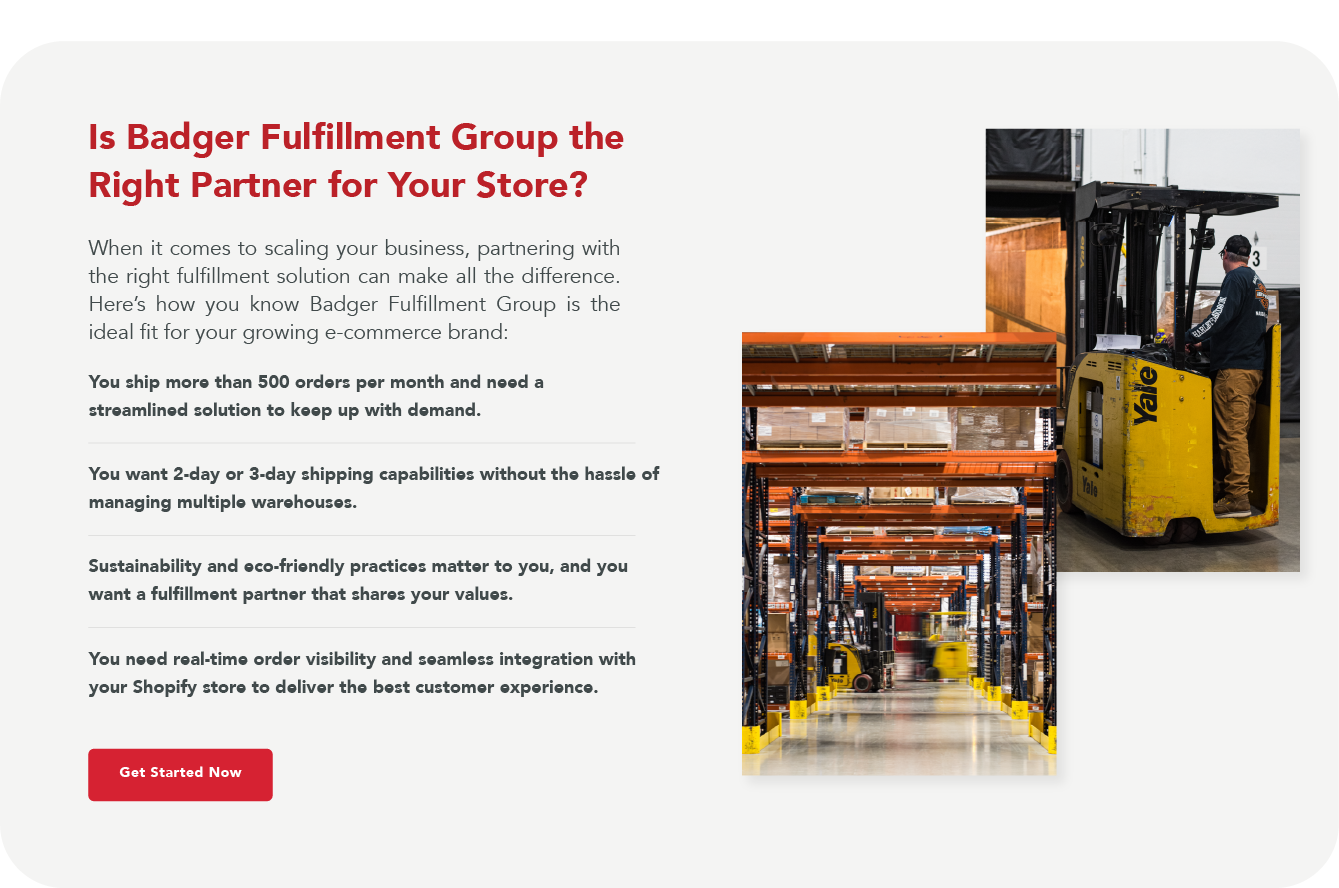Navigating the delicate balance of inventory levels presents a significant challenge for eCommerce businesses. Achieving this equilibrium is vital, as overstock can have a profound impact on both profitability and operational efficiency. This guide aims to demystify the process, offering clear strategies for understanding, preventing, and managing overstock within your warehouse, ensuring your business not only thrives but also grows.
Why and How Overstock Happens
Overstock can sneak up on even the most vigilant businesses due to a variety of factors. Poor inventory management, overestimation of market demand, seasonal demand changes, and supplier minimums can all lead to excess stock taking up valuable warehouse space. Recognizing these potential pitfalls is the first step to avoiding them.

Impacts of Overstock
The repercussions of overstock extend beyond just cluttered warehouse space. They tie up your capital, increase storage costs, and can lead to wasted products, especially if the stock becomes obsolete. The key to a lean and efficient operation is to minimize these occurrences.
Preventing Overstock
Preventing overstock is an art that requires precision, foresight, and a deep understanding of your business’s unique demands. It’s about making informed decisions that align with market trends, consumer behavior, and your financial goals.
Accurate Demand Forecasting
Leverage historical sales data and market trends to make informed purchasing decisions. Modern inventory management systems equipped with AI and machine learning can offer predictive insights, helping you order stock more accurately.
Efficient Inventory Management
Embrace strategies like Just-In-Time (JIT) to minimize holding excess stock. Conduct ABC analysis to prioritize your inventory, ensuring that you focus on stocking items that contribute the most to your bottom line.
What is an ABC analysis?
ABC analysis is a method of categorizing inventory items based on their importance to the business, typically measured in terms of sales volume, cost, or profitability. This approach helps businesses prioritize their inventory management efforts and resources to optimize stock levels and reduce carrying costs. The categorization is generally broken down into three classes:
A Items: These are the most valuable items, usually comprising a small percentage of the total inventory but accounting for a large portion of the sales or profits. They require the most attention in terms of inventory management, ensuring high availability without overstocking.
B Items: These items represent an intermediate category, not as critical as A items but still significant. They have a moderate impact on overall inventory costs and sales. B items require a balanced approach to inventory management.
C Items: Comprising the largest number of items but contributing the least to sales or profits, C items require the least attention. Inventory policies for these items often aim to minimize investment and carrying costs.
ABC analysis enables businesses to apply different inventory management strategies for each category, such as more frequent reordering and closer monitoring for A items, while adopting a more relaxed approach for C items. This prioritization ensures that resources are allocated efficiently, focusing on items that contribute most significantly to the business’s success.

Supplier Relationships and Order Management
Forge strong relationships with your suppliers to negotiate more flexible order quantities and lead times. Consider Vendor Managed Inventory (VMI) systems to allow suppliers to take a more active role in managing their products in your inventory.
What are Some Strategies for Moving Overstocked Items?
- Discounts and Promotions: Use discounts and promotions to make overstocked items more appealing. Flash sales or bundle deals can quickly clear out excess stock while offering value to your customers.
- Alternative Sales Channels: Explore sales through alternative channels like online marketplaces or pop-up shops. These platforms can help you reach a new audience for your overstocked items.
- Product Bundling: Bundle less popular items with best-sellers. This not only moves overstock but also introduces customers to products they might not have otherwise considered.
- Loyalty Programs and Incentives: Reward customers with loyalty program points or incentives for purchasing overstocked items. It’s a win-win-customers get more value, and you reduce excess inventory.
- Donations for Tax Deductions: Donating overstock to non-profits can be a way to clear inventory while potentially receiving tax deductions. It’s also a great CSR (Corporate Social Responsibility) practice.
- Return to Supplier: If possible, negotiate with your suppliers to return overstocked items. This may not always be an option, but it’s worth exploring.
- Using Inserts to Promote Less Popular Items: A clever and cost-effective strategy is to include promotional inserts in orders. These can highlight less popular items, offering special deals or showcasing their benefits. Your 3PL can play a crucial role in seamlessly adding these inserts, helping to promote these products without additional shipping costs or efforts on your part.
Leveraging Technology to Manage Overstock
Investing in robust inventory management systems can save you from the pitfalls of overstock. These systems can streamline your operations, provide real-time inventory levels, and offer insights into your stock’s health. Integrating data analytics further aids in optimizing your inventory, ensuring that overstock becomes a thing of the past.
Managing overstock is an essential aspect of running a successful eCommerce business. By understanding the causes, adopting preventative strategies, and utilizing effective tactics to move overstocked items, you can ensure that your warehouse operates efficiently and profitably. Remember, the goal is not just to manage overstock when it happens but to create a system where it’s minimized from the start.
Additional Helpful Resources:
To further support your efforts in managing inventory and optimizing operations, we’ve gathered additional resources that can enhance your strategies for reducing overstock and increasing profitability:
- What is a 3PL?: Explore how third-party logistics can help streamline your e-commerce fulfillment process. Read more
- Order Fulfillment Q&A: Find answers to common questions about order fulfillment and inventory management. Read more
- Choosing the Perfect E-Commerce Platform: A comprehensive guide to selecting the right platform for your business. Read more
- Inventory Management Basics: Learn essential inventory management techniques for e-commerce. Read more
These resources provide further insights into inventory management and fulfillment, helping you make informed decisions for your business.



